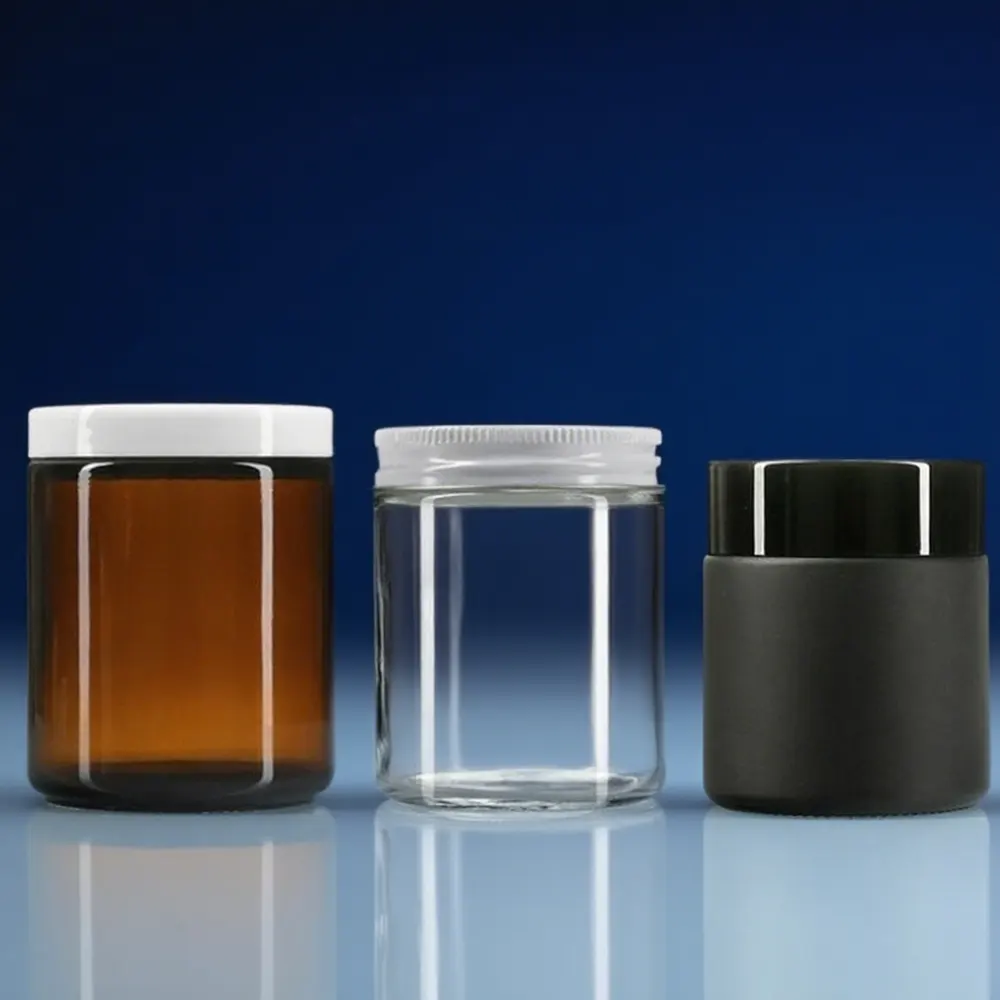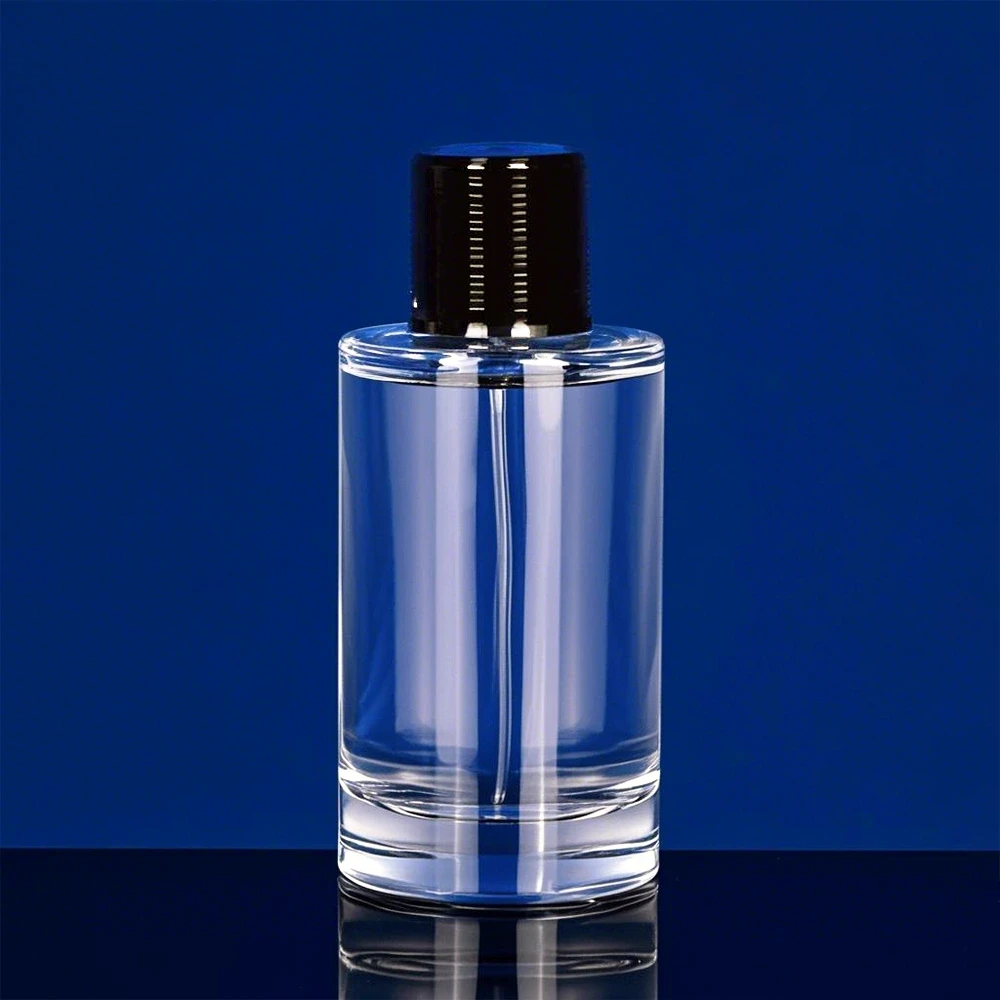
Cam Esansiyel Yağ Şişesi Başarısında Kozmetik Ambalaj Şirketlerinin Vazgeçilmez Rolü
İçindekiler
1. Giriş: Cam Esansiyel Yağ Şişesi Lansmanlarında Ambalaj Şirketlerinin Stratejik Zorunluluğu
Hızlı esansiyel yağ pazarında, kozmetik ambalaj şirketleri, özellikle cam esansiyel yağ şişeleri olmak üzere, başarılı ürün lansmanları için önemli olan stratejik ortaklardır. Bu rapor, benzersiz zorlukları ve fırsatları ele alarak çok yönlü katkılarını vurgulamaktadır. Küresel esansiyel yağ pazarının (2030-2034 yılları arasında 27-59 milyar ABD doları) önemli bir büyüme kaydetmesi beklenen ambalaj, ilk izlenim ve marka hikayesi için bir tuval görevi gören önemli bir büyüme, farklılık yaratma ve pazar başarısı aracı haline gelmektedir. Markalar için: VesseluxeRekabetçi pazarlarda birinci sınıf ambalajlama çok önemlidir.
2. Konsept ve Tasarım: Marka vizyonunun işlevsel cam uçucu yağ şişelerine dönüştürülmesi
Ürün yolculuğu, markanın kimliğini işlevsel ve estetik açıdan hoş bir hale getiren işbirlikçi konsept ve tasarımla başlar. cam uçucu yağ şişeleri.
2.1. Ürün etkinliği ve marka konumlandırması için malzeme seçimi
Esansiyel yağların kimyasal olarak inaktivitesini sağlayarak reaksiyonları önlemesi, sızmayı, saflığı, dayanıklılığı ve raf ömrünü koruması nedeniyle cam gereklidir.
- Kehribar Cam: Endüstri Standartlarına uygun, UV ışığının 'sinden fazlasını engelleyen, ışığa duyarlı yağlar için ideal.
- Kobalt Mavisi ve Yeşil Cam: Orta düzeyde UV güvenliği ve estetik görünüm sunar.
- Menekşe cam (Miron Cam): Mor hariç tüm görünür ışığı engelleyerek daha iyi koruma sağlar, aşırı hassas yağlar için idealdir, ultra-pramium formunda ancak maliyeti yüksek ürünlerdir.
- Borosilikat Cam: Zorlu uygulamalar için ideal olan, daha iyi ısı, kimyasal ve termal şok direnci sağlayan –15 Bor Oksit.
- Soda-Kireç Camı: daha ucuz ve mango (90% ticari cam), ancak daha az dayanıklıdır.
2.2. Ergonomik Tasarım ve Dağıtım Mekanizmaları
Kavrama ve kolay dökme imkanı sağlayan ergonomik tasarımıyla kullanıcı melodisini zenginleştirir.
- Damlalıklı ekler: Doğru dağıtım için önemlidir; Düzensizlik yayılmaya ve kontaminasyona neden olabilir.
- Belirli boyun: 18DIN şişeleme gibi tasarımlar, doğru kapak eşleşmesini, tutarlı dağıtımı ve sızıntıyı garanti eder.
- Şişe boyutu: Taşınabilirlik ve oksidasyonu azaltmak için küçük boy (5ml-30ml) tercih edilir, çoğunlukla roll-on veya euro damlalıklı üst kısmı vardır.
2.3. Kapatma Bütünlüğü ve Kurcalamaya Karşı Koruma
Yağların korunması ve sızıntının önlenmesi için kapaklar önemlidir, çünkü çatlaklar oksidasyonu hızlandırır.
- Tahrif edilmiş-tahrif edilmiş bant: Ürün güvenliği, tüketiciyi yanıltma ve marka itibarını koruma açısından gereklidir.
- Doldurma işlemi: Dolum sırasında, kötü takılmış bir kapak veya sorun (örneğin, yağ, dişlerde yanlış tork) sızıntıya, arızaya ve güç kaybına neden olabilir, ancak güçlü tasarım ve üretim.
2.4. Marka Kimliği ve Tüketici Algısı
Ambalaj, bir nevi marka elçisi görevi görerek tüketici algısını ve satın alma kararlarını önemli ölçüde etkiliyor; tüketicilerin 'sı yeni ürünleri tamamen ambalaja dayanarak deniyor.
- Görsel Çekicilik: Kaliteli malzemeye, işçiliğe ve ürün değerinin genişlemesine dikkat edin.
- Marka uyumu: Ambalajın marka imajıyla uyumu özgünlüğü pekiştirirken, renk, hayal gücü ve tipografi duygusal bağları harekete geçirir. Çevre dostu ambalajlar istikrarın göstergesidir.
- Kültürel estetik: Tasarımın bölgesel tercihlerle uyumlu olması gerekiyor; Ortadoğu pazarları gösterişli tasarımları, Avrupa pazarları sadeliği ve çevre dostu tasarımları tercih ediyor, Asya tasarımı ise uyumu vurguluyor.
2.5. İşbirliği ve Gelişmiş Görselleştirme Araçları
Etkili bir iş birliği için marka kimliğinin ve hedef kitlenin anlaşılması gerekir.
- Hızlı Prototip: 3B görselleştirme ve yapay zeka ile ilgili vektörler, şirketin ayrılmaz bir parçasıdır. Jarsking gibi şirketler, hızlı prototipleme ve tasarım tekrarı için 3B çizim kullanır; tasarımlar saatler içinde, numuneler ise günler içinde geliştirilir.
- Zorlukların üstesinden gelmek: Bu cihazlar, doğru malzeme iletimi ve kalıp modifikasyonları yoluyla organik şekiller için taban stabilitesinin sağlanmasına yardımcı olur.
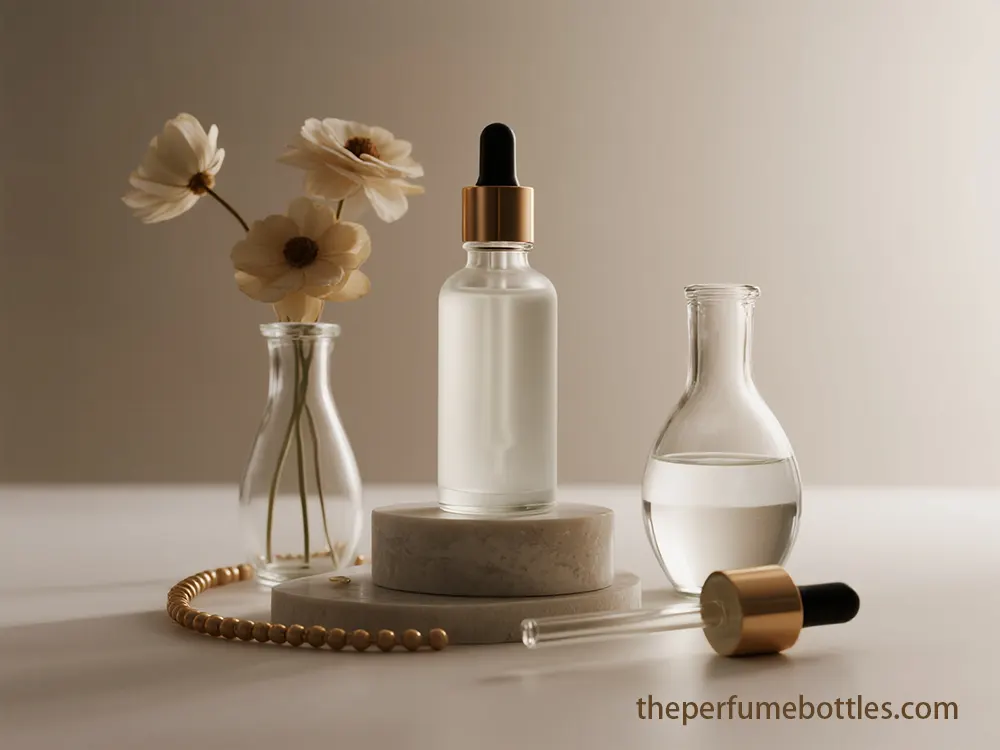
Ücretsiz Numuneler Alın
3. Cam Esansiyel Yağ Ambalajı için Teknik Geliştirme ve Prototipleme
Mühendislik ve doğrulama ürünleri bütünlüğü, güvenliği ve raf ömrünü garanti altına alır.
3.1. Kimyasal uyumluluk ve UV koruması
Cam, plastik ve kauçuğu bozan uçucu bileşiklerle etkileşimi önleyen kimyasal ataleti nedeniyle tercih edilir. Plastik şişeler kimyasalları aşındırabilir, yağ kalitesini değiştirebilir ve riski artırabilir. Birçok uçucu yağ ışığa duyarlıdır; daha koyu renkli cam (kehribar, kobalt mavisi, yeşil) zararlı UV ışınlarını engeller, raf ömrünü uzatır ve terapötik özelliklerini korur.
3.2. Yapısal Bütünlük Testi
Zorlu testler fiziksel esnekliği garantiliyor.
- Isıl Şok Direnci: Şişelerin hızlı sıcaklık dalgalanmalarını (örneğin 60–90 °C ile 0-20 °C) parçalanmadan nasıl idare ettiğini değerlendirir, nakliye ve depolama için önemlidir 64, ASTM C149 özellikle ticari cam kapları termal şoka karşı test eder.
- Düşme ve basınç dayanımı: Şişeler fiziksel etki ve iç basıncı sağlar.
3.3. Gelişmiş Tasarım ve Simülasyon Araçları
- Hızlı Prototip: 3D baskı (SLA, FFF) tasarım gelişimini hızlandırır, üretimden önce estetik ve yapının fiziksel olarak değerlendirilmesine, bütçenin uyarlanmasına ve lansmana olanak tanır.
- Terminal eleman analizi (FEA): Cam tasarımında sabit ve geçici yüklerden (iç basınç, termal şok) kaynaklanan stres, sorunlu alanları belirler ve imalat öncesinde tasarımları ışık veya performansa göre uyarlar.
3.4. Yeni Kapatma Sistemleri için Doğrulama Süreçleri
Hava geçirmez bir conta için kapatma sistemi, hava riskine ve kirlenmeye karşı koruma sağlamak açısından önemlidir. Uyumlu olmayan bileşenler veya uygunsuz dolum, sızıntıya ve arızaya neden olabilir. 18DIN kapak ve boyun uçucu yağları, damlalıklı şişeler için endüstri standartlarıdır.
3.5. Endüstri Standartları ve Kimyasal Karakterizasyon
- ISO ve ASTM standardı: Cam malzeme test ve kalibrasyonu için yöntemler belirleyin, kalite ve tolerans aralığını garantileyin. ASTM ABD'de (FDA-İlaç Panchayatı) yaygınken, ISO Avrupa ve Asya'da yaygındır.
- Esansiyel yağın kimyasal karakterizasyon özelliği: Gaz kromatografisi-mas spektrometrisi (GC-MS), bileşenleri tanımlar, konsantrasyonları ölçer, orijinalliği onaylar ve sahteciliği tespit ederek tıbbi faydaları ve düzenleyici uyumluluğu garanti eder.
3.6. Kapsamlı Paketleme Doğrulaması
Ambalaj doğrulaması, kabul kriterleri, yeterli numune boyutu ve en kötü pozisyon dahil olmak üzere eksiksiz bir plan gerektirir. Stratejiler, özellikle steril bariyer tasarımı için ISO 11607–1, -2 ve ISO gibi standartlarla uyumlu olmalıdır. Aajing çalışmaları ve ekstrakte edilebilir/lechelles testleri de kap kapatma sistemleri için önemlidir.
4. Cam Esansiyel Yağ Şişelerinin Üretimi ve Kalite Güvencesi
Yüksek kaliteli cam uçucu yağ şişeleri ileri üretim, hassas dekorasyon ve sıkı kalite kontrolüne dayanmaktadır.
4.1. Hassas Kalıplama Teknikleri
Şişeler, üfleme-üfleme, pres-üfleme ve dar ağızlı pres-üfleme (NNPB) gibi ileri formasyon teknolojileri kullanılarak üretiliyor ve bu sayede hassas cam dağılımı ve daha hafif, dayanıklı kaplar elde ediliyor.
4.2. Kritik Tavlama İşlemi
Şişeler, formasyondan sonra bhattalardaki tünelden geçirilerek hızla soğutulur ve iç gerilimleri giderilir. Bu da mukavemet ve dayanıklılığı büyük ölçüde artırır. Soda-Kireç Camı için şişeler 510-550 °C'ye ısıtılır ve 20 dakikadan 2 saate kadar süren kademeli bir soğutma işlemine tabi tutulur. Uygun tavlama, darbe direncini 0 artırabilir ve 50-70 °C'lik sıcaklık dalgalanmalarına dayanabilir.
4.3. Çeşitli Dekorasyon Yöntemleri
Uyarlama, çekicilik ve markalaşma yoluyla güzelliği artırır:
- Serigrafi baskı, sıcak folyo baskı, lazer gravür, hassas uygulama, sprey boyama, buzlanma, elektrokaplama, tampon baskı, metalizasyon, sıcak transfer ve makkashi.
4.4. Çok adımlı kalite kontrol protokolü
Sıkı, çok adımlı QC protokolleri uygulanır:
- Hammadde denetimi: saflığı, bileşimi ve nemi kontrol eder.
- Süreç içi izleme: sıcaklık, simetri ve kalıpların sürekli izlenmesi.
- Üretim sonrası denetim: Boyutsal doğruluk, görsel kusurlar (kabarcıklar, çatlaklar, çizikler) ve işlevsel testler (etki, basınç, termal şok, sızdırmazlık, kimyasal direnç) için 0 manuel ve otomatik muayene.
4.5. Gelişmiş Otomatik Muayene Sistemleri
Otomatik sistemler, yüksek hızlı ve hassas kusurları tespit etmek için vazgeçilmezdir. Yüksek çözünürlüklü kameralar, özel sensörler, LED aydınlatma ve yapay zeka/makine öğrenme algoritmaları kullanan bu sistemler, mikro kusurları (mikro çaprazlar, kabarcıklar, deformasyonlar, iplik kopmaları) 0,1 mm'ye kadar doğrulukla tespit eder.
4.6. Sürekli İyileştirme için İstatistiksel Proses Kontrolü (SPC)
SPC, verimliliği ve tutarlı kaliteyi sağlamak için gerçek zamanlı veriler kullanarak inşaat süreçlerini izler ve kontrol eder. Bu sistem, kontrol şemasını kontrol ederek, atanabilir nedenlerle genel sapmayı ayırt eder, ilk sorunu tespit eder, israfı azaltır ve süreç kapasitesini artırır.
4.7. Üretim Toleranslarının Sonraki İşlemler Üzerindeki Etkisi
Boyutsal doğruluk, hat verimliliğini ve tüketici deneyimini etkiler. Seçici sapma, dağıtıcı uyumluluğunu durdurur ve etkileyerek sızıntıya veya uygunsuz sızdırmazlık sorunlarına yol açar.
4.8. Enerji Verimliliği Girişimleri
Üreticiler enerji tüketimini ve emisyonları azaltıyor:
- Fırınları iyileştirin, atık ısı geri kazanımını uygulayın ve su/elektrik kullanımını optimize edin.
- Erime sıcaklığını ve enerji ihtiyacını azaltan Cam Kırığı (parti karışımının -90'ı) kullanımı.
- Hafif şişe tasarımı aynı zamanda eritme ve şekillendirme sırasında enerjinin azaltılmasını sağlar.
4.9. Dekore Edilmiş Camlarda Renk Tutarlılığındaki Zorluklar
Özellikle sprey kaplama veya serigrafi baskıda, büyük üretim serilerinde sürekli renk sağlamak zorlu bir iştir. Mürekkep/boya partisi çeşitliliği, uygulama kalınlığı ve işlem gibi faktörler, son rengi etkiler ve bu da sıkı bir işlem içi izleme gerektirir.
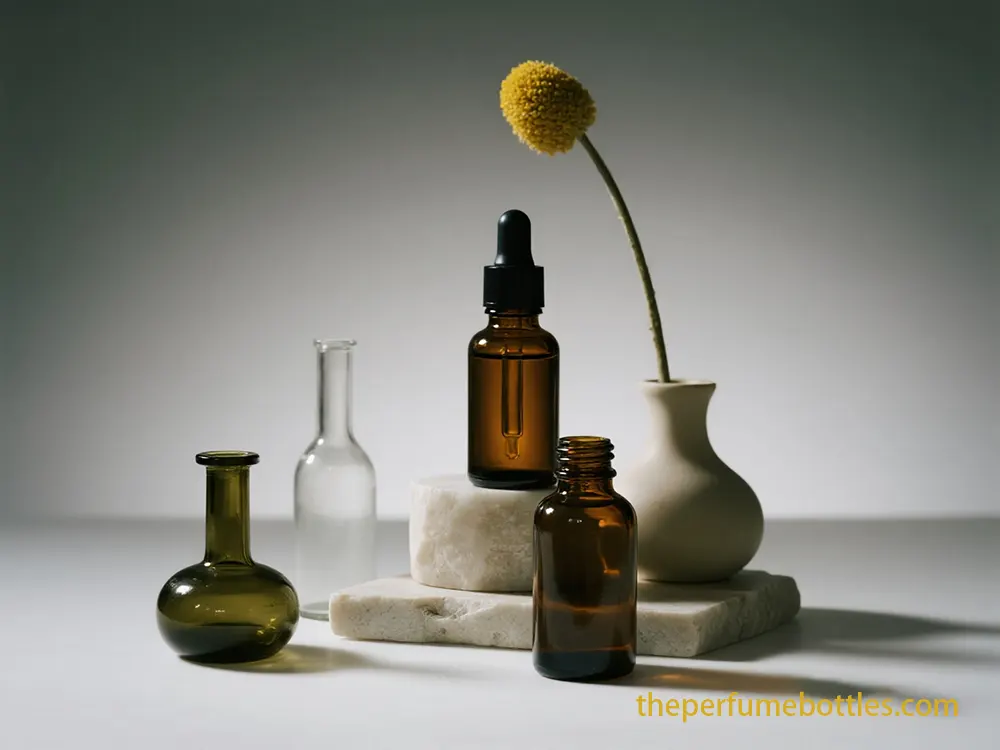
Ücretsiz Numuneler Alın
5. Cam Esansiyel Yağ Ambalajları için Tedarik Zinciri Yönetimi ve Lojistik
Hassas cam uçucu yağ şişeleri için tedarik zincirinin uyarlanması verimlilik, maliyet etkinliği ve pazar sorumluluğu açısından önemlidir.
5.1. Kaynak Optimizasyonu
- Malzeme Seçimi: Soda-Kireç, Borosilikat veya renkli cam (kehribar, kobalt mavisi, yeşil) esas olarak kimyasal etkisizlik ve UV koruması için kullanılır. Mor cam ise ultra-Permina ürünler için daha iyi koruma sağlar.
- Maliyet yapısı ve tedarikçi seçimi: Toplam teslim maliyetleri, istikrarsızlığı fiyatları etkileyen hammaddeleri (silika kumu, soda külü, kireç taşı, kollajen) içerir. B2B alıcıları, üreticileri kalite kontrolü (ISO, GMP), adaptasyon, mOQ (özel siparişler için 5.000-10.000 adet), teslim süresi ve numune tedariki açısından değerlendirir. Özellikle Çin gibi merkezlerin oluşturulmasında uzun süreli ilişkiler, kalitenin sürekliliğini sağlar.
- Belirli bileşenler ve kapalı: Doğru damlalıklar, orfis azaltıcılar, kurcalamaya karşı koruma ve sızıntı, kirlenme, düşme ve kazara yutma gibi durumlar dahil olmak üzere bütünlük ve güvenlik açısından önemlidir.
5.2. Envanter Yönetimi ve Küresel Dağıtım Optimizasyonu
- Koruyucu ambalaj: Çok katmanlı strateji, bozulmayı azaltır: tek tek ambalajlama (baloncuklu raptiye, köpük kılıflar), yastıklama pedleri, özel kalıplanmış ekler (örneğin, EPS, kaybı 'ye düşürür), hamur kalıplı elyaf veya oluklu bölücüler. Boşlukları fıstık, hava yastıkları veya krumport kağıt ambalajla doldurmak önemlidir. Ayrıca çift kutulama ve zayıf noktaları güçlendirmek de önemlidir.
- Depolama: Kuru, stabil ve sıcaklık/nem kontrollü bir ortamda saklanan şişeler, camın genleşmesini/büzülmesini önler ve ambalajı korur. Stratejik istifleme (palatizasyon, birbirine kenetleme) stabiliteyi artırır. Işığa duyarlı yağlar için doğrudan güneş ışığından korunmak gerekir.
- Taşımacılık: Titreşimleri azaltmak için, hava sürtünmesini önleyen hızlı değişimler ve sıcaklık kontrollü araçlar gereklidir. Ürün, kayışlar, yük çubukları veya hava yastıkları ile sabitlenmelidir. Dengeli ağırlık dağılımı ve net "hassas" etiketleme önemlidir.
5.3. Küresel Tedarik Zincirleri için Risk Azaltma Stratejileri
- Çeşitlendirme ve aşırılıklar: Önemli bileşenler için tek bir tedarikçiden çift veya çoklu tedarike olan bağımlılığı azaltır, jeopolitik çatışmalardan, doğal afetlerden veya işgücü sorunlarından kaynaklanan riskleri azaltır. Lojistik geçişleri/yeniden tedarikleri, riski ve teslim süresini azaltabilir. Uzun vadeli sözleşmeler ve tampon stoklar da önemlidir.
- Aktif izleme ve gündelik planlama: Sürekli risk değerlendirmesi, tedarikçi performansının izlenmesi (finansal istikrar, kalite, iş sürekliliği) ve genel planların geliştirilmesi gereklidir. Peyzaj planlaması ve geleceğe yönelik analizler için yapay zeka tabanlı ekipmanlar, riskleri tahmin etmeye ve hızlı tepkiler vermeye yardımcı olur.
5.4. Tedarik Zinciri Görünürlük Platformlarının Rolü
- Nesnelerin İnterneti ve Dijitalleşme: Platformlar, gerçek zamanlı ve uçtan uca şeffaflık için Nesnelerin İnterneti (IOT) sensörü, RFID etiketi ve barkod sistemi kullanır. Nesnelerin İnterneti (IOT) cihazı, kargonun konumunu (sıcaklık, nem, şok, titreşim) izler ve GPS takibi sağlar. Bu veriler, aktif kararlar alınmasını, engellerin belirlenmesini ve anında inceleme ve talep işleme alınmasını sağlar.
- Blok zinciri: Esansiyel yağ bütünlüğü ve uyumluluğu için önemli olan geri döndürülemez kayıtları, genişletilmiş izlenebilirliği ve güvenilir işlemleri arayın.
5.5. Nakliye Yöntemlerinin Maliyet-Fayda Analizi (Spekülatif/Tahmini)
Deniz taşımacılığı hacimli ancak zaman alıcıdır. Hava taşımacılığı, özellikle hassas camlar için sıcaklık kontrolü ve güçlü koruyucu ambalajlama ile hızlı dağıtım sağlar ancak maliyeti yüksektir. Bu seçenek, maliyet verimliliği, pazara sunma hızı ve arıza/çevresel dalgalanma risklerini dengeler; yüksek değerli veya zamana duyarlı petrol, hava taşımacılığını haklı çıkarabilir.
5.6. Jeopolitik Olayların Cam Tedarik Zincirleri Üzerindeki Etkisi
Jeofiziksel olaylar (ticaret savaşları, gümrük vergileri, çatışmalar, kısıtlamalar) cam tedarik zincirlerini büyük ölçüde etkilemekte, hammadde maliyetlerini artırarak üretimde aksaklıklara yol açmakta ve tedarikçilerin çeşitlendirilmesini gerektirmektedir. Örneğin, yüksek sıcaklıklar nedeniyle yaşanan elektrik kesintileri, derin tedarik zinciri görünürlüğüne ve alternatif tedarikçilere olan ihtiyacı vurgulamaktadır.
6. Cam Esansiyel Yağ Ambalajlarında Mevzuata Uygunluk ve Sürdürülebilirlik
Ambalaj şirketleri, karmaşık kurallarda gezinme ve dayanıklı uygulamaları entegre etme konusunda önemli yardım sağlar.
6.1. Mevzuata Uygunluk
- FDA Yönetmeliklerinin Geliştirilmesi (2024): Güncellenmiş etiketleme netliği (standart yazı tipleri, uyarı sembolleri olmadan tıbbi iddia yok, INCI isimlendirmesi, FDA onayı), çocuklara dayanıklı ambalajlar için odaklanmış yağlara genişletildi (örneğin, esbilion, nane, çay ağacı yağı) ve güvenlik için malzeme güvenliği.
- CPSC ve Çocuklara Dayanıklı Ambalaj (PPPA): ABD CPSC, bazı uçucu yağlar da dahil olmak üzere tehlikeli ev ürünleri için çocuklara dayanıklı ambalajı zorunlu kılan PPPA'yı uygulamaktadır. Taşıma amaçlı olmayan ürünler için geri çağırmalar yapılmaktadır.
- Federal Tehlikeli Maddeler Yasası (FHSA) Etiketlemesi: FHSA, ithalatçı/üretici bilgilerini, genel/kimyasal adları, sinyal terimlerini ("tehlike", "dikkat"), tehlikeli/önlem ifadelerini, ilk yardım talimatlarını ve "erişemeyeceği yerde saklayın" ifadelerini gerektiren tehlikeli uçucu yağlar için özel etiketlemeyi zorunlu kılar.
- Malzeme Güvenliği ve UV Güvenliği: Cam, hareketsizliği, kimyasal reaksiyonları ve sızıntıyı önlemesi nedeniyle tercih edilir. Amber ve kobalt cam, UV koruması sağlarken, Amber daha iyi bir düşüş koruması sağlar.
6.2. Cam Esansiyel Yağ Ambalajlarında Sürdürülebilirlik
- Konjumer sonrası geri dönüştürülmüş (PCR) Cam: Cam kalıcı olarak geri dönüştürülür. PCR camı kullanımı (oldukça) hammadde tasarrufu sağlar ve enerji tasarrufu sağlar (Kullet'teki her artış için %2,5). Zorlukların arasında sınırlı yüksek kaliteli, gıda sınıfı PCR, tutarsız malzemelerin kalitesi ve yüksek maliyetler yer almaktadır.
- Hafif inovasyon: Endüstri, entegre üretimin sürdürülmesiyle şişe kütlesini koruyarak önemli ilerlemeler kaydetti.
6.3. Sürdürülebilirliğe Yönelik Sertifikasyon ve Tüketici Talebi
- Sertifikasyon Sertifikasyon: Katı, bilimsel temellere dayalı bir değerlendirme standardı olan bu standart, malzeme sağlığı, ürün döngüsü, temiz hava/iklim koruması, su/toprak liderliği ve sosyal adalet konularında Avrupa Birliği'nin 2030 yılına kadar tüm ambalajlara yönelik hedefleriyle uyumludur.
- B Corp Sertifikasyonu: Sosyal ve çevresel performans, yüksek hesap verebilirlik ve şeffaflık standartlarını yansıtmaktadır. Sürdürülebilir Ambalaj Endüstrileri (SPI) ve JBM Packaging gibi şirketler, B Corp. sertifikasına layık görülmüştür.
- Artan tüketici talebi: Tüketicilerin 'ı kalıcı ambalajlı markalardan alışveriş yapma eğiliminde; 'ü ise bu ürünleri bilinçli olarak satın alıyor. 2025 yılına kadar yaklaşık 7 kişiden 10'unun ambalajlı ürün satın alması bekleniyor ve 'ü ek ücret ödeyecek. Bu belirgin kalıcılık, etiket için güçlü bir tercih ().
- Genişletilmiş üretici sorumluluğu (EPR) yasası: Yeni EPR yasası, ambalaj üreticilerinin malzeme ve uyumluluk şeffaflığına olan talebini artırıyor ve ambalaj türleri, ağırlığı ve geri dönüştürülmüş malzemeler hakkında ayrıntılı veriler gerektiriyor. Ayrıntılı dokümantasyon sağlayan üreticiler rekabet avantajları elde ediyor.
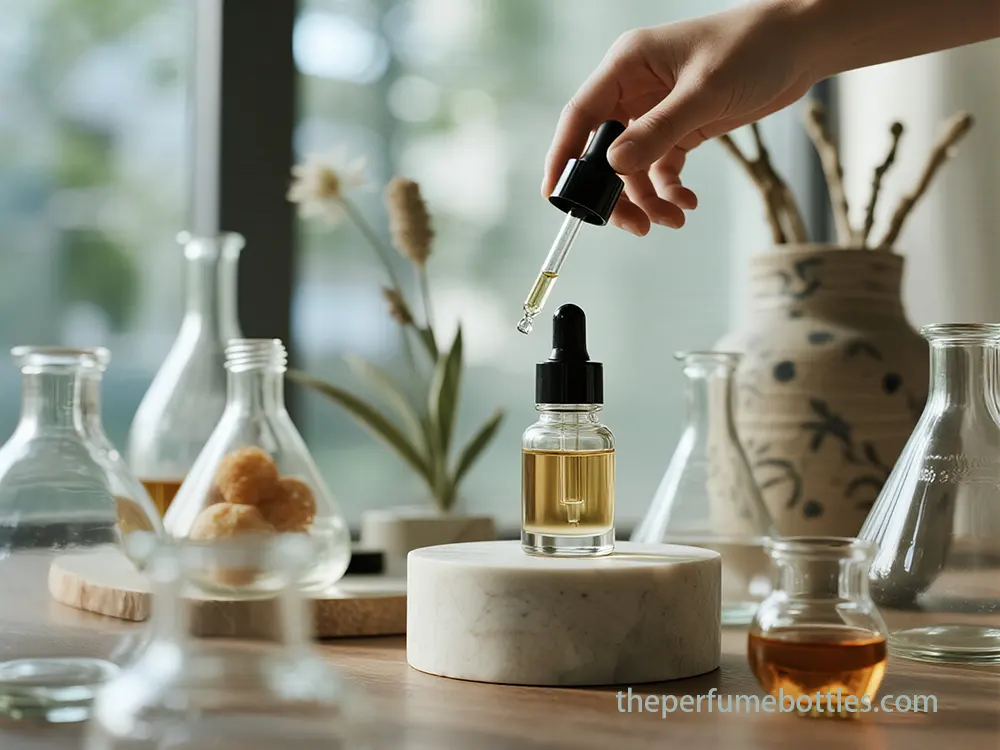
Ücretsiz Numuneler Alın
7. Stratejik Ortaklık: Pazara Giriş Hızını Artırmak ve Maliyet Verimliliğini Artırmak
Ambalaj şirketleri stratejik danışmanlar gibi davranır, pazar trendlerini önerir, maliyetlere uyum sağlar ve verimli bir uçucu yağ ürünü lansmanı için sıkı üretimi hızlı ve etkili bir şekilde uygular.
7.1. Piyasa Trendleri ve İstihbaratı
Esansiyel yağ sektörü, yetişkinlerin ,7'sinin düzenli olarak esansiyel yağ kullandığı, ana akım bir refah merkezidir. Pazarın, tüketicilerin doğal sağlık, kalıcı yaşam ve genel refah tercihleriyle desteklenen önemli bir büyüme kaydetmesi bekleniyor. Ambalaj trendleri, çevre dostu malzemeler ve minimal tasarımla kişiselleştirme ve sağlamlığı vurguluyor.
7.2. Stratejik Danışman Olarak Paketleme Şirketleri
Ambalaj şirketleri, üretimin ötesinde katma değerli hizmetler sunar. Pazar trendleri konusunda tavsiyelerde bulunur, maliyet yapılarını optimize eder ve çevik üretim uygularlar. Ambalaj, markanın kimliğini oluşturmak, değerleri ve hikaye anlatımını iletmek için önemlidir. Özellikle ilgi çekici ambalajlar, QR kod veya AR özellikleri için etkileşimli öğeler içeren güçlü bir sosyal medya pazarlama aracı görevi görür. Etkileşim, pazarlama materyallerini güçlendirmek için veri/görüntü sağlar.
7.3. Maliyet Optimizasyon Metodolojileri
- Değer Mühendisliği (VE) ve Değer Analizi ve Değer Mühendisliği (VAVE): Verimli malzemelerin kullanımı, yapısal tasarım uyarlaması, malzeme yeniden yapımı ve ikincil ambalajlama yoluyla sistematik yaklaşımlar, kalite veya işlevden ödün vermeden ürün maliyetlerini (genellikle %5-40) azaltır.
- Dolaylı maliyet tasarrufları: Düşük depolama alanı, daha hafif malzemeler sayesinde daha düşük nakliye maliyeti ve en kısa paketleme süresi.
- Gelişmiş ambalaj dayanıklılığı: VE, düşük bozulma nedeniyle önemli maliyetleri düşüren, nakliye hasarını azaltacak şekilde ambalajın dayanıklılığını artırabilir.
- Uzmanlık ve Veri: Paketleme mühendisleri, ideal malzemeleri belirlemek, SKU'yu standartlaştırmak ve operasyonu kolaylaştırmak için verileri ve tescilli modelleri kullanıyor ve %8-16 oranında tasarruf bildiriyor.
- Yeniden tasarlama ve optimizasyon: Ambalajın yeniden düzenlenmesi ve şeklinin iyileştirilmesi yeterli içerik ve atık eksikliğine yol açabilir; şişenin ağırlığındaki %8'lik azalma yıllık yaklaşık 1,6 milyon ton içeriğin ortadan kaldırılmasını sağlayabilir ve muhtemelen 3 milyar ABD dolarından fazla tasarruf sağlayabilir.
7.4. Çevik Üretim Metodolojileri ve Pazara Sunma Hızı
- Yalın üretim: Tedarik zincirini atıkları ortadan kaldıracak şekilde düzene sokar, sürekli ve sorumlu bir akış yaratır ve en düşük maliyetle en düşük talebi karşılayacak şekilde üretim yapar. Bu sayede sorunsuz bir lansman, kalite artışı ve neredeyse tamamen ortadan kaldırma sağlanır.
- Tek dakikalık değişim kalıpları (smed): Yalın işleyişin yalın işleyişi, dışsal ve akıcı faaliyetleri, ayrıştırarak, ayırarak, bireysel faaliyetleri azaltan yalın bir işleyiş.
- Uygulamanın Faydaları: SMED uygulaması ve MES/CMM entegrasyonu, ortalama değişim süresini üç ayda -30, 6-12 ayda ise -50 oranında azaltabilir. Vaka çalışmaları, çalışma süresinde önemli bir azalma olduğunu, genel ekipman verimliliğinin (OE) arttığını ve işçilik maliyetlerinin düştüğünü göstermektedir.
7.5. Stratejik Paketleme Ortaklıklarının Yatırım Getirisi
Stratejik Ortaklık Hizmeti Prasad, çeşitlendirmeyi, yeni pazarlara erişimi, kaynak adaptasyonunu ve artan yaratıcılığı/inovasyonu mümkün kılar. Yatırım getirisini ölçmek, kârlılık ve bilinçli kararlar için önemlidir ve hem doğrudan hem de dolaylı maliyetleri hesaba katar. Düzenli değerlendirme ve ortalama amaç hedefleri, yatırım getirilerini izler ve stratejik hedeflerle uyumu sağlar. Güçlü üretim ortaklıkları, tedarik zinciri şeffaflığı, düşük kesintiler, daha kısa sürede teslimat, paylaşılan değerler ve sıkı kalite güvencesi sayesinde yüksek kaliteli ürünler sunar.
7.6. Pazar Talebinin Tahmin Edilmesinde Veri Analitiğinin Rolü
Talep tahmininde Veri Analitiği, geçmiş verilere, yapay zeka algoritmasına, istatistiksel modele ve gerçek zamanlı içgörülere (POS, çevrimiçi işlemler) dayanarak doğru üretim, stok ve satış kararları alınmasını sağlar. Fazlalıkları azaltır. Ambalaj şirketleri için, doğru tahmin için nicel (örneğin zaman serisi) ve nitel (uzman görüşü) yöntemlerin bir kombinasyonu şarttır.
8. Cam Esansiyel Yağ Ambalajında Ortaya Çıkan Yenilikler
Esansiyel yağ şişesi tasarımı ve işlevselliğinin geleceği, geleceğe yönelik trendler ve teknolojik gelişmeler tarafından şekillendirilmektedir.
8.1. Gelişmiş Koruma ve İşlevsellik için Gelişmiş Yüzey İşlemleri
- Özelleştirilmiş UV Koruması: Amber Cam Blok 'e kadar UVB ışınlarına dayanıklıdır. Şeffaflıktan ödün vermeden UV bloke dalga boyunu doğru şekilde ayarlamak için atom katmanı biriktirme (ALD) gibi gelişmiş teknikler tespit edilmekte ve bu da gelişmiş fotokarboz önleme özelliği sunmaktadır.
- Esansiyel yağ bazlı antimikrobiyal kaplamalar: Esansiyel yağların altta yatan antimikrobiyal özellikleri vardır. Clear Research (Ağustos 2024), mikro nanoküre içinde Okaliptüs esansiyel yağı içeren yeni bir antibakteriyel yüzey çalışması gerçekleştirdi ve bu sayede ,98 oranında kontaminasyon azaltımı sağlanarak biyofilm oluşumunun önlenmesine yönelik bir umut vaat etti.
- Oliofobik ve hidrofobik kaplamalar: Bu kaplamalar, tüketici elektroniğinde yaygın olarak kullanılan, yağa dayanıklı, parmak izi tutmayan ve su açısından zengin yüzeyler oluşturur.
- Plazma İyon Değişim Tedavisi (P-IET): Sinerjik bir P-IET prosesi türü I Borosilikat Cam, su bazlı ilaçların verimli, atıksız dağıtımı için önemli olan ve doğru ve kesin dozlara uyarlanabilen sürdürülebilir hidrofilik yüzeyler yaratır.
8.2. Gelişmiş Tüketici Katılımı ve Tedarik Zinciri Güvenliği için Akıllı Paketleme Entegrasyonları
Doğruluk ve izlenebilirlik için NFC/RFID: Saha İletişimi (NFC) ve Radyo Frekansı Tanımlama (RFID), ürün doğrulama ve tedarik zinciri izlenebilirliği için yüksek değerli alanlarda kullanılır. Karşı ve Dinamik Kriptografi algoritmaları.
- Tüketici Deneyimi Kapasitesi: Akıllı Paketleme (QR Kod, NFC Etiketi, AR) detaylı ürün bilgisi, kullanım talimatları ve dozaj hatırlatıcıları, derin müşteri etkileşimi ve kutu açma deneyimini artırmayı sağlar.
- Etik çıkarımlar: Yapay zeka destekli akıllı paketleme verileri, gizlilik, güvenlik, adalet ve hesap verebilirlik konularında önemli ahlaki görüşler ortaya koymaktadır. Hassas bilgilerin toplanması, kullanılması ve depolanması son derece önemlidir.
8.3. Yeni Sürdürülebilir Cam Formülasyonları ve Çevresel Hususlar
- Biyobozunur Cam: Mart 2023'te, amino asit ve peptitlerden oluşan çevre dostu yeni bir cam ailesi ortaya çıktı. Bu, geleneksel camın biyolojik olarak parçalanmama özelliğini ele alan, geri dönüştürülmüş ve biyolojik olarak parçalanabilir biyobazlı camdır. Ancak, şu anda "kitlesel ticarileştirmeden çok uzak".
- Ultra Hafif Cam: 50 yılı aşkın süredir cam ambalajı daha hafif ve daha az enerji tüketen bir şekilde üretiyoruz.
- Kalıcı bir seçenek olarak cam: Cam 0 geri dönüştürülebilir ve kalite kaybı olmadan sonsuza dek geri dönüştürülebilir. Requiqling enerji tüketimini ve CO2 emisyonlarını azaltır. Tüketiciler, çevre dostu olduğu iddiası nedeniyle cam ambalajı tercih ediyor.
- Çevre dostu kapatma ve dolum sistemi: Yenilikler arasında biyolojik olarak parçalanabilen kapaklar, bambu kapaklar ve geri dönüştürülebilir PP damlalıklar yer alıyor. Tek kullanımlık ambalajları azaltmak için yeniden doldurulabilir ve yeniden uygun hale getirilebilir çözümler ilgi görüyor.
Vesseluxe, bu yeniliklerin ön saflarında yer alarak, sadece uçucu yağları koruyup saklamakla kalmayıp aynı zamanda markanın varlığını güçlendiren ve bilinçli tüketicilerle bağ kuran ambalajları dağıtmak için en son teknikleri sürdürülebilir uygulamalarla birleştiren Özel çözümler sunuyor.
Yorumlar
Ürün Kategorileri
Sıcak Satış Şişeleri
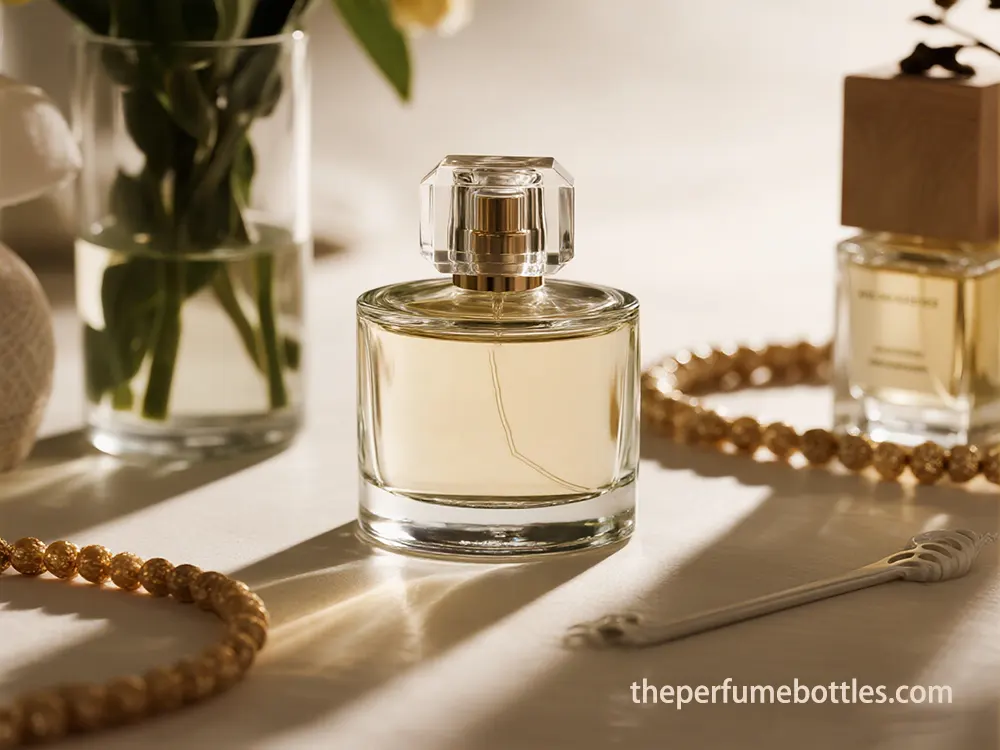
Cam Parfüm Şişesi Tedarikçisi Seçimi İçin Stratejik Bir Çerçeve
Bu kılavuzla stratejik cam parfüm şişesi tedarikçinizi bulun. Doğru ortağın parfüm markaları için hızı ve ölçeklenebilir büyümeyi nasıl artırdığını öğrenin.
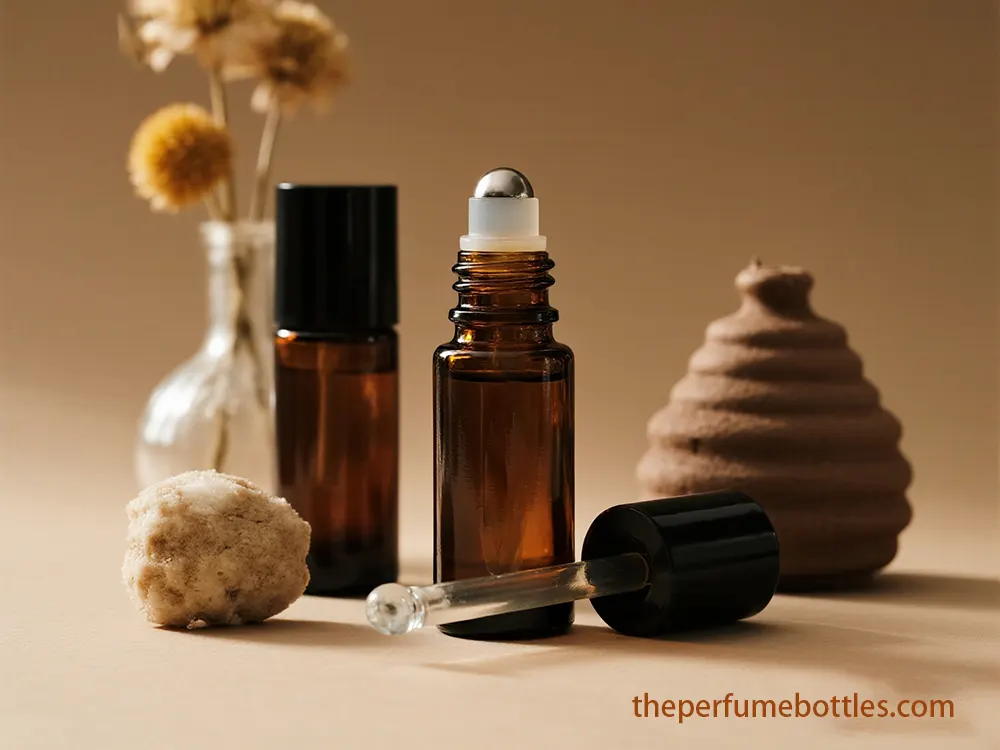
Esansiyel Yağlar İçin Roll-On Şişeler Alırken Kaçınılması Gereken 5 Hata
Esansiyel yağlar için roll-on şişe satın alırken kaçınılması gereken 5 hata: Kaplama malzemeleri, roll-on kalitesi
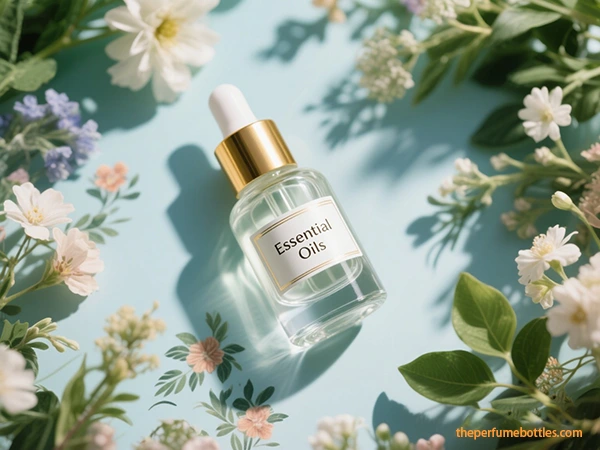
Toptan Premium Esansiyel Yağ Şişeleriyle Satışlarınızı Artırın
İşletmenizi toptan birinci sınıf uçucu yağ şişeleriyle güçlendirin. Markanızın başarısı için dayanıklı ve şık şişeleri rekabetçi fiyatlarla satın alın.

Marka Kimliğini Yükseltmek: Premium Pazar Konumlandırması için Stratejik Toptan Parfüm Cam Şişeleri
Toptan parfüm cam şişelerinin stratejik seçiminin marka kimliğini nasıl yükselttiğini keşfedin.

Parfüm Şişesi Nasıl Doldurulur?
Toplu siparişler için en iyi parfüm şişesi üreticilerini keşfedin. Küresel markalar için özel tasarımlar, dayanıklı malzemeler ve toptan satış çözümlerini keşfedin.
- +86 186 5178 1159
- [email protected]
- Pazartesi-Pazar 07:00-21:00
Etiketler
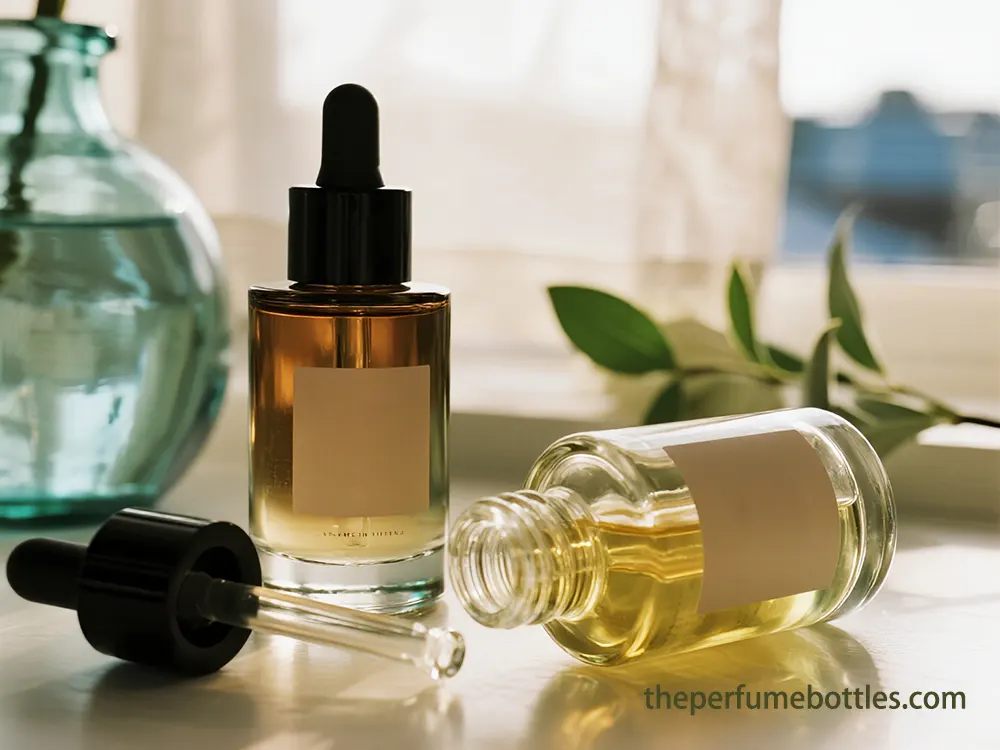
Doğru Cam Damlalıklı Şişe Tedarikçisini Seçmek: Fiyattan Daha Önemli Olmasının Sebebi
Maliyetin ötesinde kalite, uyumluluk, tedarik istikrarı ve sürdürülebilirliğe odaklanarak doğru cam damlalıklı şişe tedarikçisini nasıl seçeceğinizi öğrenin.

Vaka İncelemesi: Portekizli Bağımsız Bir Parfüm Markası, Cam Parfüm Şişeleri Tedarikçisi Olarak Mosteb'i Nasıl Seçti?
Bir parfüm markası, hassas mühendislik ve istikrarlı özel üretim ile cam parfüm şişeleri tedarikçisi olarak bizimle iş ortaklığı yaparak, camdaki buzlanma ve kapak uyumu sorunlarını çözüyor.

Cam Parfüm Şişesi Tedarikçisi Seçimi İçin Stratejik Bir Çerçeve
Bu kılavuzla stratejik cam parfüm şişesi tedarikçinizi bulun. Doğru ortağın parfüm markaları için hızı ve ölçeklenebilir büyümeyi nasıl artırdığını öğrenin.

Vaka Çalışması: Cam Rulo Şişe Fabrikamız, Esansiyel Yağ Markası İçin Ambalaj Teslim Etti
Bir cam silindir şişe fabrikasının, güvenilir, sızdırmaz birinci sınıf şişeler üretmek için yuvarlanma kararlılığı ve ince boyun dayanıklılığı sorunlarını nasıl çözdüğüne dair bir vaka çalışması.



